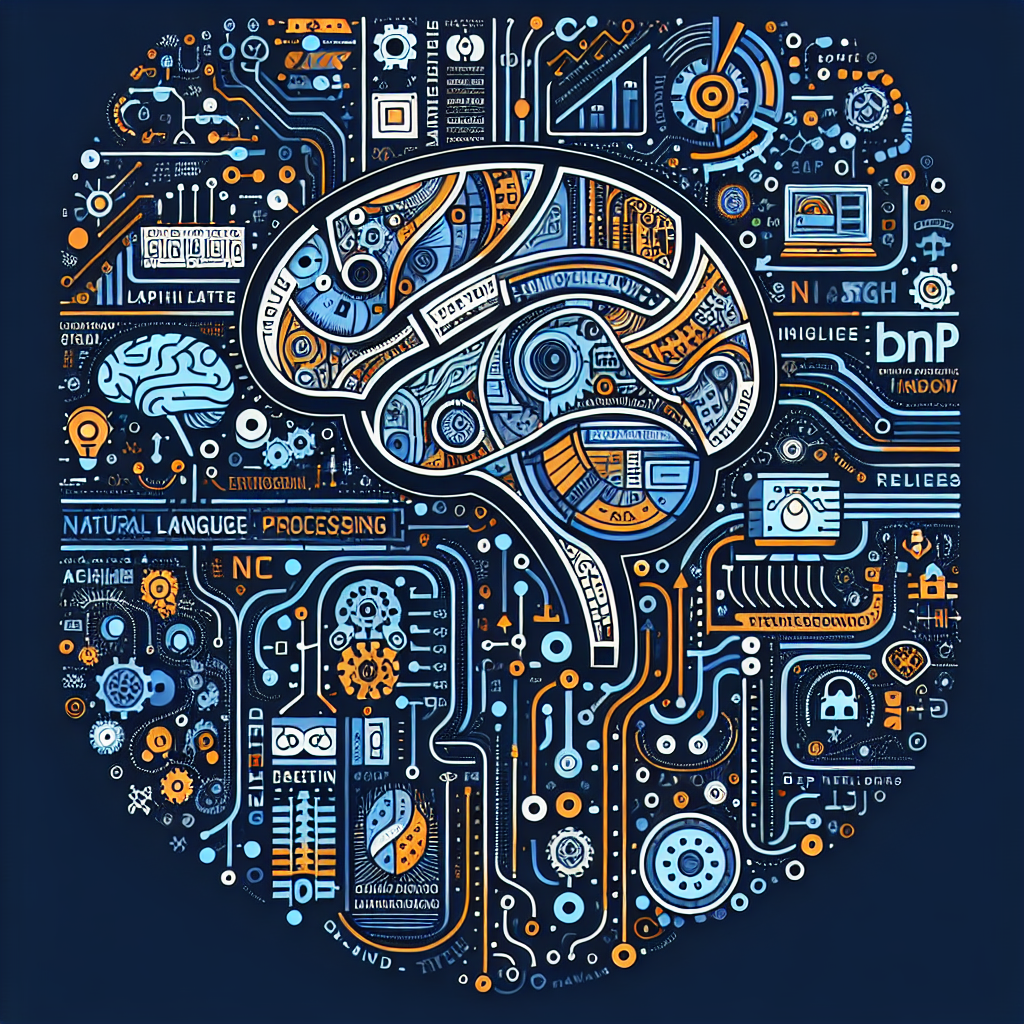Understanding the Basics of Natural Language Processing (NLP)
Natural Language Processing (NLP) is a field of artificial intelligence that focuses on the interaction between computers and human language. It involves the ability of computers to understand, interpret, and generate human language in a way that is both meaningful and useful. NLP has become increasingly important in recent years as the amount of text data available has grown exponentially, and the need to extract valuable insights from this data has become crucial for businesses and organizations.
In this article, we will explore the basics of Natural Language Processing, its applications, and how it is being used to transform the way we interact with technology.
How Does NLP Work?
NLP involves a range of techniques and algorithms that enable computers to understand and process human language. These techniques can be broadly categorized into three main areas:
1. Text Preprocessing: This involves cleaning and preparing text data for analysis. This may include tasks such as removing punctuation, converting text to lowercase, tokenizing the text into individual words, and removing stop words (common words that do not add much meaning to the text).
2. Text Analysis: This involves using various algorithms and techniques to analyze the text data. This may include tasks such as sentiment analysis (determining the sentiment or tone of a piece of text), entity recognition (identifying named entities such as people, organizations, or locations), and topic modeling (identifying the main topics or themes in a piece of text).
3. Natural Language Generation: This involves the generation of human-like text by computers. This may include tasks such as text summarization (summarizing a long piece of text into a shorter version) and machine translation (translating text from one language to another).
Applications of NLP
NLP has a wide range of applications across various industries. Some of the most common applications of NLP include:
1. Chatbots: NLP is used to power chatbots, which are computer programs that can interact with users in a conversational manner. Chatbots are used in customer service, e-commerce, and other industries to provide instant support and assistance to users.
2. Sentiment Analysis: NLP is used to analyze the sentiment or tone of a piece of text. This can be used to analyze customer feedback, social media posts, and other text data to understand the opinions and emotions of users.
3. Information Extraction: NLP is used to extract useful information from unstructured text data. This may include extracting named entities, relationships between entities, and other important information from large volumes of text.
4. Machine Translation: NLP is used to power machine translation systems, which can translate text from one language to another. Machine translation systems are used in online translation services, language learning apps, and other applications.
5. Text Summarization: NLP is used to summarize long pieces of text into shorter versions. Text summarization can be used to quickly extract the main points from a document or article, making it easier for users to understand the key information.
Challenges in NLP
While NLP has made significant advancements in recent years, there are still several challenges that researchers and developers face in the field. Some of the main challenges in NLP include:
1. Ambiguity: Human language is inherently ambiguous, with words and phrases often having multiple meanings depending on the context. This makes it challenging for computers to accurately understand and interpret human language.
2. Lack of Data: NLP models require large amounts of annotated data to train effectively. However, obtaining high-quality labeled data can be time-consuming and expensive, especially for languages with limited resources.
3. Domain Specificity: NLP models trained on general text data may struggle to perform well on domain-specific text, such as medical or legal documents. Developing domain-specific NLP models requires specialized training data and expertise.
4. Bias: NLP models can inherit biases present in the training data, leading to biased outputs. Addressing bias in NLP models is a critical challenge to ensure fair and ethical use of NLP technology.
FAQs about NLP
Q: What are some popular NLP libraries and tools?
A: Some popular NLP libraries and tools include NLTK (Natural Language Toolkit), spaCy, StanfordNLP, and Gensim. These libraries provide a range of functionalities for text preprocessing, analysis, and generation.
Q: How can I get started with NLP?
A: To get started with NLP, you can start by learning the basics of Python programming language and then explore NLP libraries such as NLTK or spaCy. There are also many online courses and tutorials available that can help you learn NLP concepts and techniques.
Q: What are some common NLP tasks?
A: Some common NLP tasks include text classification, named entity recognition, sentiment analysis, machine translation, and text summarization.
Q: How is NLP being used in healthcare?
A: NLP is being used in healthcare to analyze electronic health records, extract useful information from medical texts, and improve clinical decision-making. NLP is also being used to develop virtual assistants for patients and healthcare professionals.
Q: What are some ethical considerations in NLP?
A: Ethical considerations in NLP include issues such as bias in NLP models, privacy concerns related to the collection and analysis of text data, and the potential misuse of NLP technology for harmful purposes. It is important for developers and researchers in NLP to address these ethical considerations and ensure responsible use of NLP technology.
In conclusion, Natural Language Processing (NLP) is a rapidly evolving field of artificial intelligence that has the potential to transform the way we interact with technology. By enabling computers to understand, interpret, and generate human language, NLP has a wide range of applications across various industries. While there are still challenges to overcome in NLP, the advancements made in recent years have paved the way for exciting new developments in the field. Whether you are a beginner looking to learn NLP or a seasoned professional working on advanced NLP projects, there is no doubt that NLP will continue to play a key role in the future of AI and technology.

